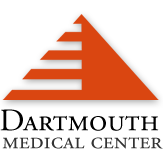Sunday, October 10, 2010
New CPR Stats
"Hands-only CPR" may be associated with better survival than conventional method.
The CBS Evening News (10/5, story 11, 0:25, Couric) reported, "CPR saves lives every day." Now, a "major study suggests the best way to do it." According to the paper in the Journal of the American Medical Association, cardiac arrest "victims have a 70% greater chance of survival if CPR is administered by using only hand compressions rather than by using compressions and mouth-to-mouth."
The finding is noteworthy, because some 300,000 Americans suffer cardiac arrest every year, the Wall Street Journal (10/6, Dooren) reports. But, according to the American Heart Association (AHA), less than one-third of those patients receive CPR from bystanders. AHA maintains that many are hesitant about offering mouth-to-mouth to individuals who are more often than not strangers.
There are also "many reasons why mouth-to-mouth may not be advisable for lay people, beyond the fact that many simply do not want to perform it," the Los Angeles Times (10/5, Maugh) "Booster Shots" blog noted. "Among other things, there is a rapid deterioration of blood flow that occurs during even brief disruptions of chest pumping, the long ramp-up time for resumption of normal flow when compressions are begun again after a pause, the significant amount of time necessary to perform breathing, and the critical importance of keeping blood flow to the brain going during a heart attack. Moreover, most heart attack victims gasp for air every 15 to 20 seconds, and that provides more oxygen than mouth-to-mouth, experts said."
Lead investigator Dr. Ben Bobrow, of the Arizona Department of Health Services, told the AP (10/6, Johnson): "We wanted to take away all the reasons bystanders do nothing when they witness another person collapse." The state "reached 500,000 people through public service announcements, YouTube, free classes, emails, and inserts in utility bills, all promoting hands-only CPR." Aiming to gauge the success of those efforts, Dr. Bobrow and his colleagues "looked at 4,415 adult cardiac arrests outside of hospitals in Arizona from 2005 to 2009 during the campaign."
Of those cases, "2,900 received no CPR from witnesses, 666 (about 15 percent) received conventional CPR that includes rescue breathing and 849 (about 19 percent) received compression-only CPR," HealthDay (10/5, Goodwin) reported. "Over time, along with public education campaigns encouraging 'hands-only' CPR, the annual rate for bystanders attempting CPR improved from about 28 percent in 2005 to nearly 40 percent in 2009." That rise "coincided with the shift to the compression-only technique -- in 2005, only about 20 percent of lay rescuers did compression-only compared to nearly 76 percent in 2009."
Subscribe to:
Post Comments (Atom)



No comments:
Post a Comment